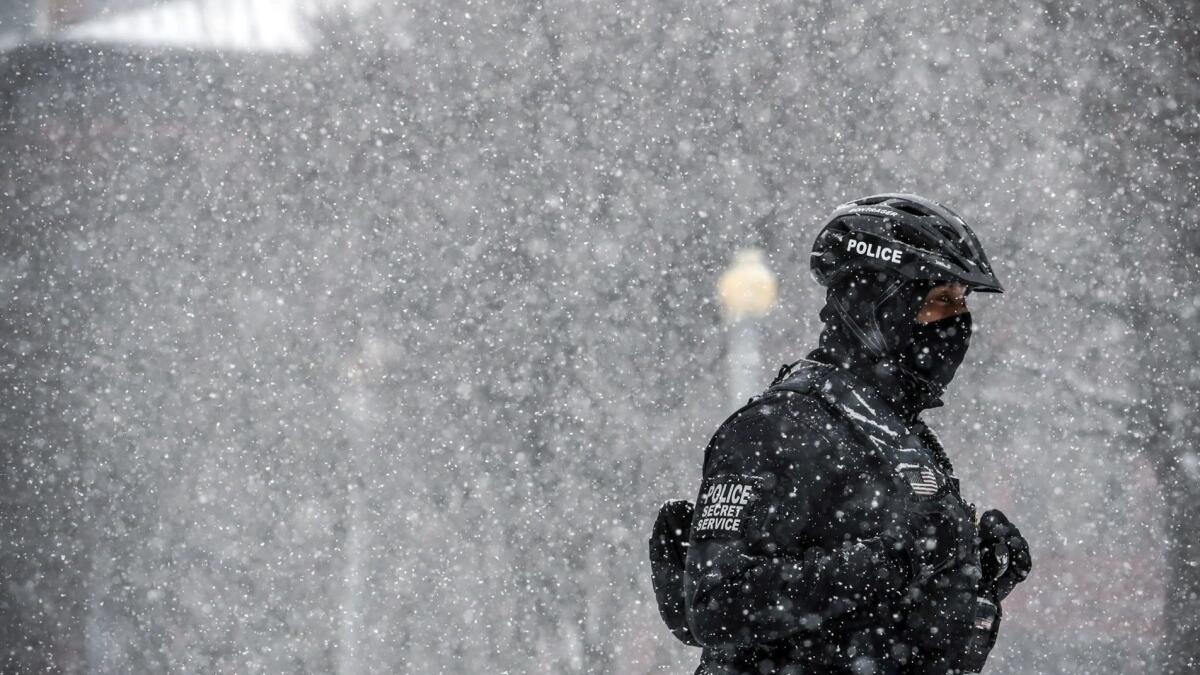Freezing cold blamed for more than two dozen deaths in eight states

- Share via
Reporting from Chicago — The dangerous cold and heavy snow that hobbled the Northern U.S. this week has retreated, but not before exacting a human toll: more than two dozen weather-related deaths in eight states and hundreds of injuries, including frostbite, broken bones, heart attacks and carbon monoxide poisoning.
In Illinois alone, hospitals reported more than 220 cases of frostbite and hypothermia since Tuesday, when the polar vortex moved in and overnight temperatures plunged to minus 30 degrees or lower — with wind chills of minus 50 or worse in some areas.
Hennepin Healthcare in Minneapolis normally sees about 30 frostbite patients in an entire winter. It admitted 28 in the last week, spokeswoman Christine Hill said Friday.
“I definitely saw more frostbite than I’ve ever seen in my entire career just in the last three days,” said Dr. Andrea Rowland-Fisher, an emergency department physician at Hennepin Healthcare.
Most of those patients, she said, had underlying problems that made it difficult for them to take care of themselves: the developmentally delayed, the mentally ill, the very young and the very old. They also included people with injuries related to drugs and alcohol — people who passed out or did not realize they were cold or injured.
“It’s heartbreaking when there are people who can’t take care of themselves and get exposed, just because they either escape from the care that they’re being given or because they’re not being supervised,” Rowland-Fisher said.
Others got frostbite on their way to work after being exposed to the cold for a short time — including on their hands, feet, ears and face. That included people whose cars wouldn’t start or who got stuck outside for other reasons, as well as those who just didn’t think they could get frostbitten so quickly and went outside without gloves or other protective gear.
Several required “maximal treatment,” admission to the hospital’s burn unit for therapies that include drugs to restore circulation to try to avoid amputations. Some of them will probably still require amputations, a decision usually made by burn doctors four to 10 days after the injury.
The weather was thought to be a factor in at least 26 deaths, including a motorist who died during a snowstorm Friday after striking a salt truck that had pulled off to the side of Interstate 70 in central Indiana. Others died after freezing outdoors or in unheated homes or while shoveling snow.
By Friday, the deep freeze had mostly abated, with temperatures climbing as high as the low 20s in Minneapolis and Chicago. With the weather system moving east, temperatures could rise by 80 degrees in Illinois within days. Meanwhile, a fresh layer of snow blanketed an area from western New York state to Washington on Friday.
More to Read
Sign up for Essential California
The most important California stories and recommendations in your inbox every morning.
You may occasionally receive promotional content from the Los Angeles Times.













